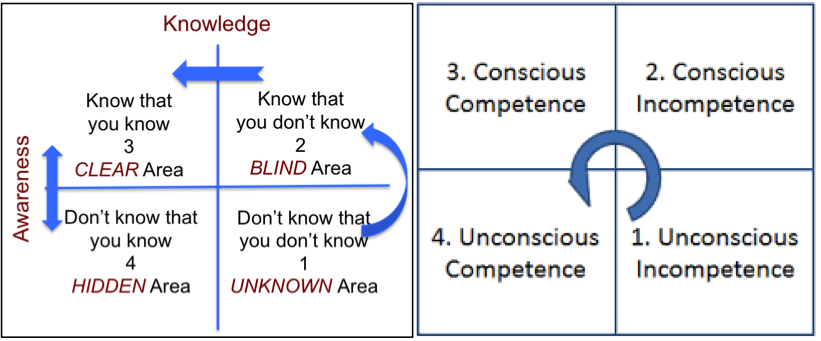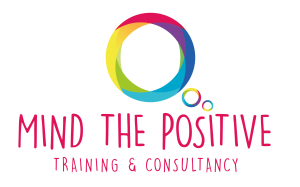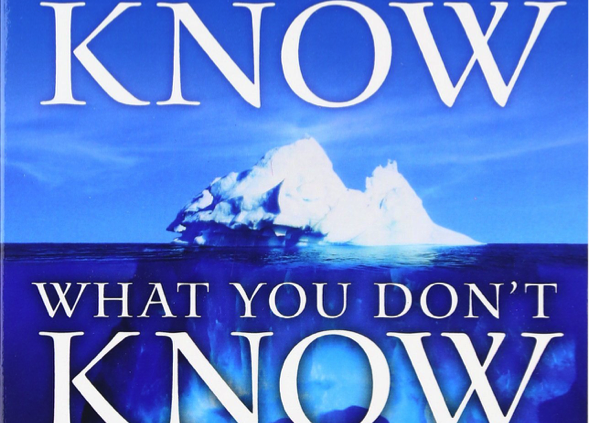Do You Know What You Don’t Know?
Throughout the history of mankind, human beings –mostly philosophers have questioned the essence of knowledge, our thought systems, and how we process information. Perhaps, Socrates’ phrase “All I know I know nothing” is one of the best known philosophical quotes of all times. Socrates, in essence, emphasizes that one cannot know anything with absolute certainty, but can feel confident about certain things. However, within a philosophical perspective, it is open discussion, especially when analyzing how we know what we know. I will be discussing the Theory of Knowledge within the attention and awareness (mindfulness) perspective; attempting to explain how mindfulness may be related in the mechanisms of learning –that is, the transfer of information into knowledge.
Today, information and knowledge has become the most valuable asset. Despite its abstract form, it has more value than any tangible agent –such as land, machinery, etc. Looking back in history, during technological revolution era (20th century) it was the weapons, vehicles, and tools; in the industrial revolution era (19th century) it was the machinery; and in the medieval era (13th-18th century) it was the land that majorly seen as the most valuable asset for the power holders. Today, none of the tangible agents -land, machinery or technological vehicles, is as worth as the agents that involve information and knowledge. This argument justifies itself even more, when considering current leading companies –Uber, Airbnb, Facebook, Whatsapp, Google, etc., whose market worth rely on the basis of information and knowledge they manage. When looking into future, the power agent is transforming towards information, knowledge, management of “Big Data” and a collective knowledge. Soon, not later than 20 years, we will be sharing and “enjoying” our life with the artificial intelligent (AI), where robots will be replacing our jobs, and possession of information and knowledge will no longer be the valid asset.
I feel your sense of frustration and sense of helplessness from afar. We either shut our eyes to it, or accept the bitter truth of the reality. If you are interested in getting more into it, I recommend you Noah Yuval Harari’s latest talk at the World Economic Forum 2018, at the link https://www.youtube.com/watch?v=hL9uk4hKyg4. Nonetheless, with all the bitter truth, while the world has its own pace of development, my intention is to shed a light and share a bright-sight on what’s available for us, and what we can do in regards to information and knowledge.
Another weirdly bitter truth that made me utterly surprised to find is the “not so recent” developments in the field of Epistemology (Theory of Knowledge). Scientists –such as Jean Piaget, Joseph Jaworski, Ernst von Glaserfeld, Jere Confrey, have proposed that the knowledge we possess actually may not be absolutely correct, asserting that knowledge is subjective. They explain the theory of knowledge, as well as the mechanisms of learning within a Constructivist approach. This approach sees learners as active agents, who construct and internalize new knowledge based on their observation, interaction, and experience with objects, rather than passively receiving from the environment. It is how we transfer information to knowledge. Since this process is based on “experiential reality”, that differs from person to person, knowledge is regarded as subjective. So, according to the “new” understanding of knowledge and learning, what we know might not be absolutely true; whereby we better constantly revise our knowledge through seeking validation. But how?
“The more I learn, the more I realize how much I don’t know” – Albert Einstein
Is there a way we can know what we don’t know? What does “I don’t know that I don’t know” mean? How can we be aware of our knowledge? Sounds like a trap: you do not know that you do not know! This trap-like state brings to mind Albert Einstein’s famous words –“The more I learn, the more I realize how much I don’t know.” This, in fact, knowing what we know, as well as knowing what we don’t know, is only the open and clearly visible tip of a giant iceberg. Underneath lays a whole world of the unknown!
So, the key to bringing what’s in the unknown onto surface is attention and awareness. It is our awareness that keeps us at the clear open space, and our attention that assists us in the mechanism of processing information. In order to widen our awareness of knowledge, we need to pay attention to the pieces of information scattering around us. It is easier said than done! Because, while constantly bombarded with information –valuable or useless, we either give attention to, or ignore what’s approaching. Our attitude –attention or ignoring, changes over context, needs, interests, or even sometimes coincidence. We frequently find ourselves randomly come across various streams of information –such as a billboard, book cover, paper headline, social media post, web link, or a word of mouth, that have a triggering effect on our attention towards transforming a piece of information into knowledge.
The process goes through the four stages of learning, called conscious competence. James Atherton has explained this process using a self-awareness tool that is used for better understanding others and ourselves (Johari Window – Joe Luft and Harry Ingham, 1955). Atherton, modeled the Johari window for the “knowing and not knowing” issue, explains knowledge within the conscious competence framework (see figure below). Most learning (knowledge acquisition) takes place when we get to a conscious competence from a conscious incompetence level; or move from the “knowing that we don’t know” area (Blind) to “knowing that we know” area (Clear).
Now just think of a time you had a weird physical or emotional sensation bothering you: you were aware of it, however you did not know what the feeling exactly was; or could not name it. When giving enough attention and awareness, you could come to the stage of consciously identifying the feeling, and become to feel and know the sensation you were surrounded with.
 The “knowing and not knowing issue”, within the four stages of competence
The “knowing and not knowing issue”, within the four stages of competence
While the above example is an easy one, a more complex and challenging task is identifying a physical or emotional sensation that is there within, however you are neither aware nor know of its existence. This is hidden in the Unknown area. Imagine a stressful and tough day. You have gone through unpleasant experiences, and finally are at the end of the day, sitting “calmly” eating your dinner. All of a sudden you begin feeling stiffness on your shoulders and back, uneasy turning your head sideways. This sensation is most probably an outcome of the stressful day you had. By the time you had it, you most probably had experienced some sort of tension at your muscles, however you neither sensed it, nor knew of it. It was there all along, but hidden, at the unconscious incompetence level. The tension revealed itself with a much worse pain, unexpectedly, grabbing your attention. Starting from that moment, the pain (piece of information) has been a triggering agent to revive your awareness towards finding its source and remedy.
We may generate plenty more examples to refer to our unconscious incompetence level. For instance, have you ever done mountain climbing, or scuba diving; written a book in Chinese, or a movie script; maybe baked a wedding cake, or a royal meal? You have no idea whether you know how to do them, or if you have any interest at all. You might want to learn and do them. Interesting part is that, the idea itself might have not even occurred to you until you read the above lines.
This unknown unconscious incompetence area is as deep as the ocean. Millions of ideas, activities, or competencies are hidden deep in there. It all depends on a “random” stimulus to get your attention tangled towards an idea, realization, or point of attraction that would lead you towards the conscious incompetence. Once an idea, a piece of information, or a skill-set drop into the conscious incompetence area (Blind), it provides the opportunity of knowledge acquisition, that would widen the clear are. Of course, it is up to our choice and interest, to go forward in the observation, interaction, and experience process of constructing knowledge. At this point we may move on to the Clear area, or stay at the Blind. Such path of transfer is applicable for all sorts of skills and competence –manual, cognitive, and physical. For further read on “knowing what you know issue” click the link to Atherton’s article http://doceo.org.uk/tools/knowing.htm.
If you have read so far till the end, you deserve the truth about what “knowing what we know” issue is connected with today. Or why it is important to be aware of. Today, knowledge and managing information is the agent of power. To be strongly accountable in holding this power, one first needs to know him/herself, be attentive and aware of own skills and competences; and later be competent to know and manage others. Mindfulness –attention and awareness– practices are among the most powerful tools to bring what’s hidden in the unknown area, which may lead the individual to conscious competence through self-exploration.
Hence, in your next meditation session, I invite you to let the meditation process surface and reveal what there is hidden within the Unknown. Let yourself explore the unexpected stimulus to reveal itself, give your focused attention to it, as the Zen Philosophy says “sit on it” with awareness. This attention and awareness to a new piece of information will guide you towards clarity, to the Clear zone. Hence, you’ll be transferring that piece of information into knowledge through exploring, observing, interacting, and experiencing.
Enjoy it!









Leave a Reply
Want to join the discussion?Feel free to contribute!